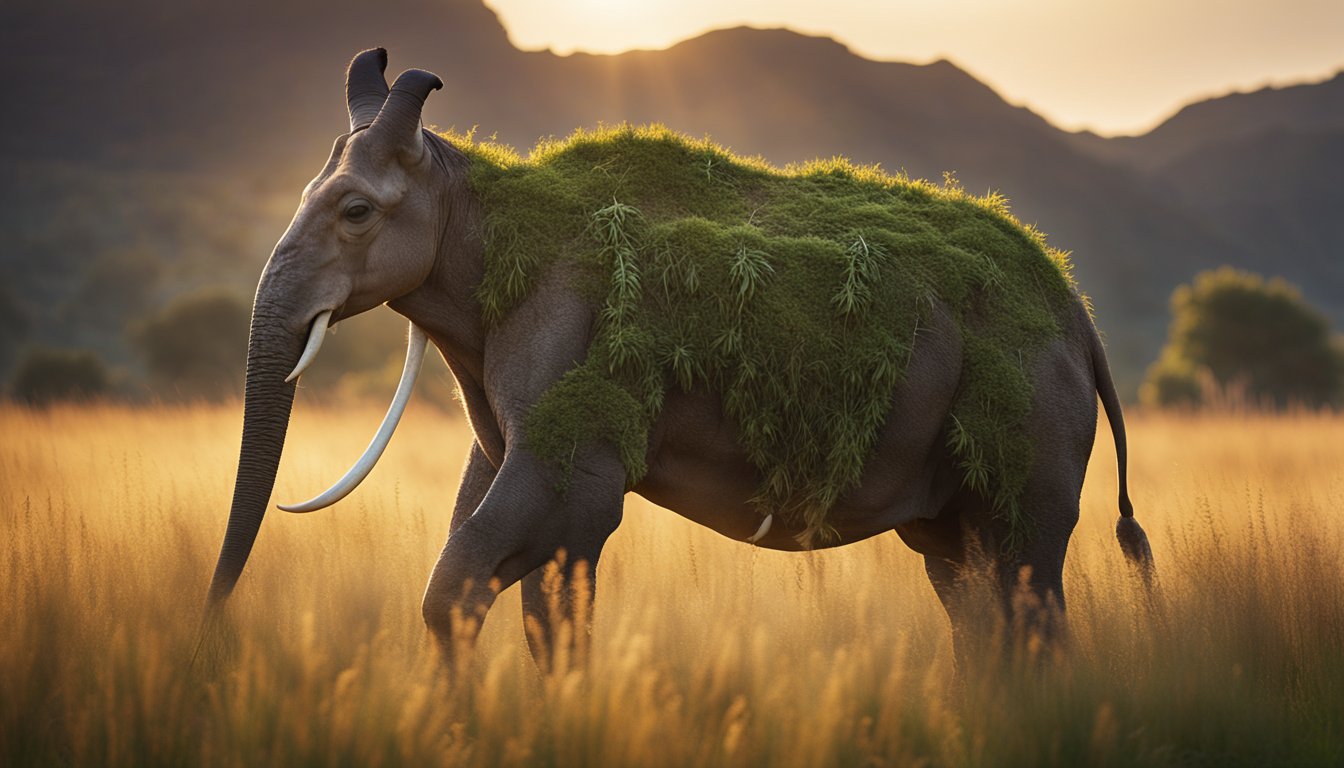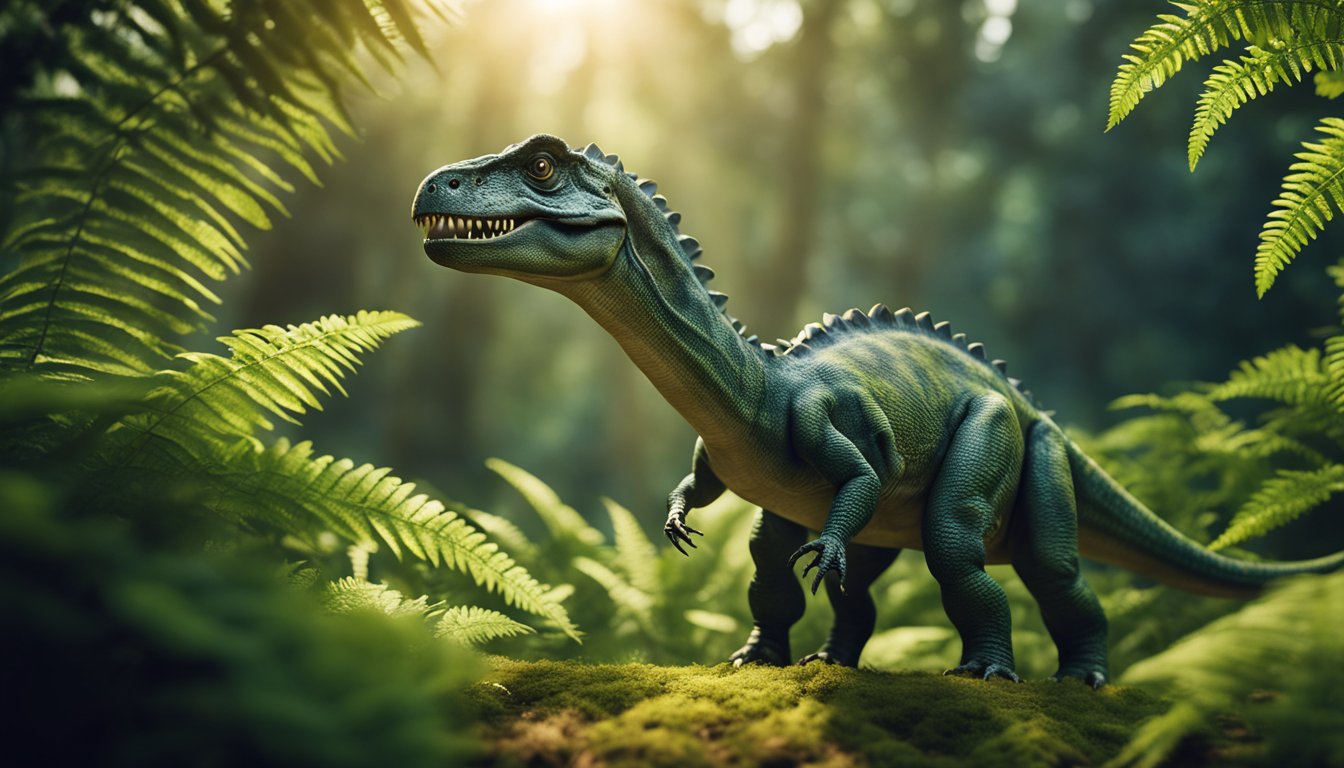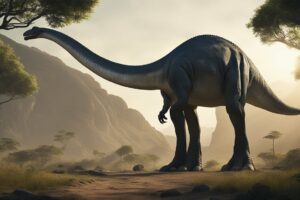Indricotherium is a prehistoric mammal that roamed the earth millions of years ago, yet it remains largely unknown by most people.
Despite being the largest land mammal to ever exist, Indricotherium is often overshadowed by more famous prehistoric creatures like the T-Rex or the woolly mammoth.

But what exactly is Indricotherium? This massive mammal was a herbivore that lived in the forests of central Asia between 34 and 23 million years ago.
Indricotherium was so large that it weighed as much as three or four adult African elephants, making it the largest land mammal ever discovered.
Its closest living relative is the rhinoceros, but Indricotherium was much larger and had a long, slender neck that it used to reach leaves on tall trees.
Despite its impressive size, Indricotherium is extinct and has been for millions of years.
However, scientists continue to study its remains and piece together what life might have been like for this giant mammal.
By studying fossils and other evidence, researchers have been able to learn more about Indricotherium’s diet, behavior, and habitat.
Discovering the Giant: Indricotherium

Indricotherium, also known as Paraceratherium, is the largest land mammal that ever lived on Earth.
Despite its massive size, many people have never heard of it. In this section, we will explore how this giant was discovered and what makes it so unique.
Fossil Records and Locations
Indricotherium lived during the Oligocene Epoch, which was about 34 to 23 million years ago.
Its fossils have been found in several locations, including Central Asia, China, and Mongolia.
The Gobi Desert is one of the main areas where Indricotherium fossils have been discovered.
The first fossils of Indricotherium were discovered in the early 20th century by Russian paleontologist Alexei Borissiak.
The fossils consisted of a skull and jawbone, which were found in Mongolia.
Since then, more fossils have been found, including teeth, bones, and even complete skeletons.
Size and Stature: Comparisons to Modern Giants
Indricotherium was much larger than any land mammal that exists today. It stood about 18 feet tall at the shoulder and weighed up to 20 tons.
To put that into perspective, an adult male elephant weighs around 6 tons, and a giraffe stands at around 18 feet tall, but Indricotherium was much bulkier and heavier.
Indricotherium’s closest living relative is the rhinoceros, but it was much larger and had a longer neck.
Its skull was also longer and flatter than that of a rhino. Despite its size, Indricotherium was a herbivore, feeding on leaves and branches from trees.
Interestingly, Indricotherium was not the only giant mammal that lived during the Oligocene Epoch.
Andrewsarchus, the largest carnivorous mammal that ever lived, was also around during this time.
However, it was much smaller than Indricotherium, weighing only around 1 ton.
In conclusion, Indricotherium was a massive creature that roamed the Earth millions of years ago.
Its fossils have helped scientists learn more about the history of life on our planet.
The Life of Indricotherium
Indricotherium, also known as Paraceratherium, was the largest land mammal to ever walk the earth.
These enormous herbivorous mammals lived in the forests of central Asia between 34 and 23 million years ago.
Resembling rhinos, they lacked horns and had long necks, which allowed them to reach leaves and branches high up in the trees.
Diet and Feeding Habits
Indricotherium was a herbivore, which means it only ate plants. Their diet consisted mainly of leaves, twigs, and branches from trees.
To get to the highest leaves, they would stand on their hind legs and use their long necks to reach up high.
They had strong jaws and teeth that allowed them to chew tough plant material.
Habitat and Range
Indricotherium lived in the subtropical forests of central Asia, which covered parts of what is now China, Mongolia, Kazakhstan, and Pakistan.
These forests were rich in vegetation, providing plenty of food for these giant herbivores.
Sadly, their habitat was gradually destroyed due to climate change and human activities like deforestation, which led to their extinction.
Despite their massive size, Indricotherium was a gentle giant that lived peacefully alongside other animals in their forest habitat.
They are a fascinating example of the incredible diversity of life that existed on our planet millions of years ago.
Indricotherium’s Contemporaries

Other Prehistoric Giants
Indricotherium was not the only giant to roam the earth.
In fact, it coexisted with many other prehistoric giants, such as the mighty dinosaurs, the blue whale, and the megalodon.
However, Indricotherium was unique in that it was the largest land mammal ever to have lived, dwarfing even the largest rodent and the giant ape, Gigantopithecus.
Dinosaurs were the most famous prehistoric creatures, and they ruled the earth for millions of years.
However, Indricotherium lived long after the last of the dinosaurs had gone extinct.
The blue whale is the largest animal that has ever lived, but it is a marine mammal, not a land mammal like Indricotherium.
The megalodon was the largest shark that ever lived, but it too was a marine creature.
Coexisting Species
Indricotherium coexisted with many other species during its time on earth.
Some of these species were fellow mammals, such as the sabre-toothed tiger, the woolly mammoth, and the giant ground sloth.
Others were reptiles, such as the crocodile and the turtle. Still others were birds, such as the terror bird.
Despite its massive size, Indricotherium was not invincible.
It had to contend with predators such as the sabre-toothed tiger, which was a formidable foe.
However, Indricotherium had some advantages over its predators. For example, its sheer size made it difficult for predators to take down.
Additionally, it had a thick hide that provided some protection against attacks.
Overall, Indricotherium was an impressive creature that coexisted with many other prehistoric giants.
While it may not be as well-known as some of its contemporaries, it was certainly one of the most impressive, and it continues to fascinate scientists and enthusiasts alike.
Conservation: Learning from the Past

Indricotherium, the largest land mammal to have ever lived, went extinct millions of years ago.
While we cannot bring back this amazing creature, we can learn from its story to help protect the animals that share our world today.
Conservationists and scientists around the world are working hard to save endangered animals and prevent them from becoming extinct, just like Indricotherium.
One important lesson we can learn from Indricotherium is the importance of habitat preservation.
Indricotherium lived in forests and grasslands, and its extinction was likely caused by changes in its habitat due to climate change and human activity.
Today, many animals are facing similar threats to their habitats, such as deforestation and pollution.
By protecting and preserving their habitats, we can help ensure that these animals have a safe and healthy place to live.
Another lesson we can learn from Indricotherium is the importance of understanding animal behavior.
Scientists believe that Indricotherium was a peaceful herbivore, which means it didn’t harm other animals or humans.
However, many animals today are endangered because of human activities such as hunting and poaching.
By understanding animal behavior and creating laws and regulations to protect them, we can help prevent these animals from becoming extinct.
Finally, we can learn from Indricotherium that every animal is important.
Indricotherium may have been the largest land mammal, but it was just one of many amazing creatures that once lived on our planet.
Today, many animals are endangered and facing extinction, and it is up to us to help protect them.
By supporting conservation efforts and learning more about the animals that share our world, we can help ensure that they will be around for generations to come.
In conclusion, Indricotherium may be extinct, but its story can still teach us valuable lessons about conservation and the importance of protecting our planet’s amazing animals.
By working together, we can help ensure that these animals will continue to thrive for years to come.
Frequently Asked Questions

How did Indricotherium compare in size to modern elephants?
Indricotherium was the largest land mammal that ever existed.
It was so massive that it towered over modern-day elephants.
According to AMNH, Indricotherium stood about five meters tall and weighed up to 20 tons.
To put that into perspective, an average human is shorter than one leg of this giant mammal!
What kind of habitat did the Indricotherium live in?
Indricotherium lived in the forests and grasslands of Central Asia, ranging from what is now Caucasia to Mongolia and China.
It preferred open areas with plenty of vegetation to graze upon.
According to It’s Nature, the climate in those areas was subtropical and humid.
Can you tell me about the diet of the Indricotherium?
Indricotherium was a herbivore, which means it only ate plants.
Its diet consisted of leaves, branches, and other vegetation that it could reach with its long neck.
It had a unique set of teeth that were adapted for grinding tough plant material.
According to Malevus, Indricotherium had no horns, unlike modern-day rhinos, but it had a flexible upper lip that it could use to grasp and strip leaves from trees.
How does the Indricotherium rank among prehistoric giants?
Indricotherium was one of the largest prehistoric mammals that ever lived.
It was even bigger than other famous prehistoric giants like the Tyrannosaurus Rex or the Woolly Mammoth.
According to Atlas Obscura, Indricotherium was so massive that paleontologists are still trying to figure out what it looked like and how it moved.
When did the Indricotherium roam the Earth?
Indricotherium lived during the Oligocene epoch, which lasted from about 34 million to 23 million years ago.
It went extinct along with many other prehistoric mammals during the Miocene epoch, which began about 23 million years ago and lasted until about 5 million years ago.
What are some interesting facts about the Indricotherium’s physical characteristics?
Indricotherium had a number of unique physical characteristics that set it apart from other prehistoric mammals.
For example, it had a long, flexible neck that it could use to reach vegetation high up in trees.
It also had a barrel-shaped body, short legs, and a long tail.
According to New Dinosaurs, Indricotherium’s closest living relative is the rhinoceros, but it looked more like a giant, hairless camel.






